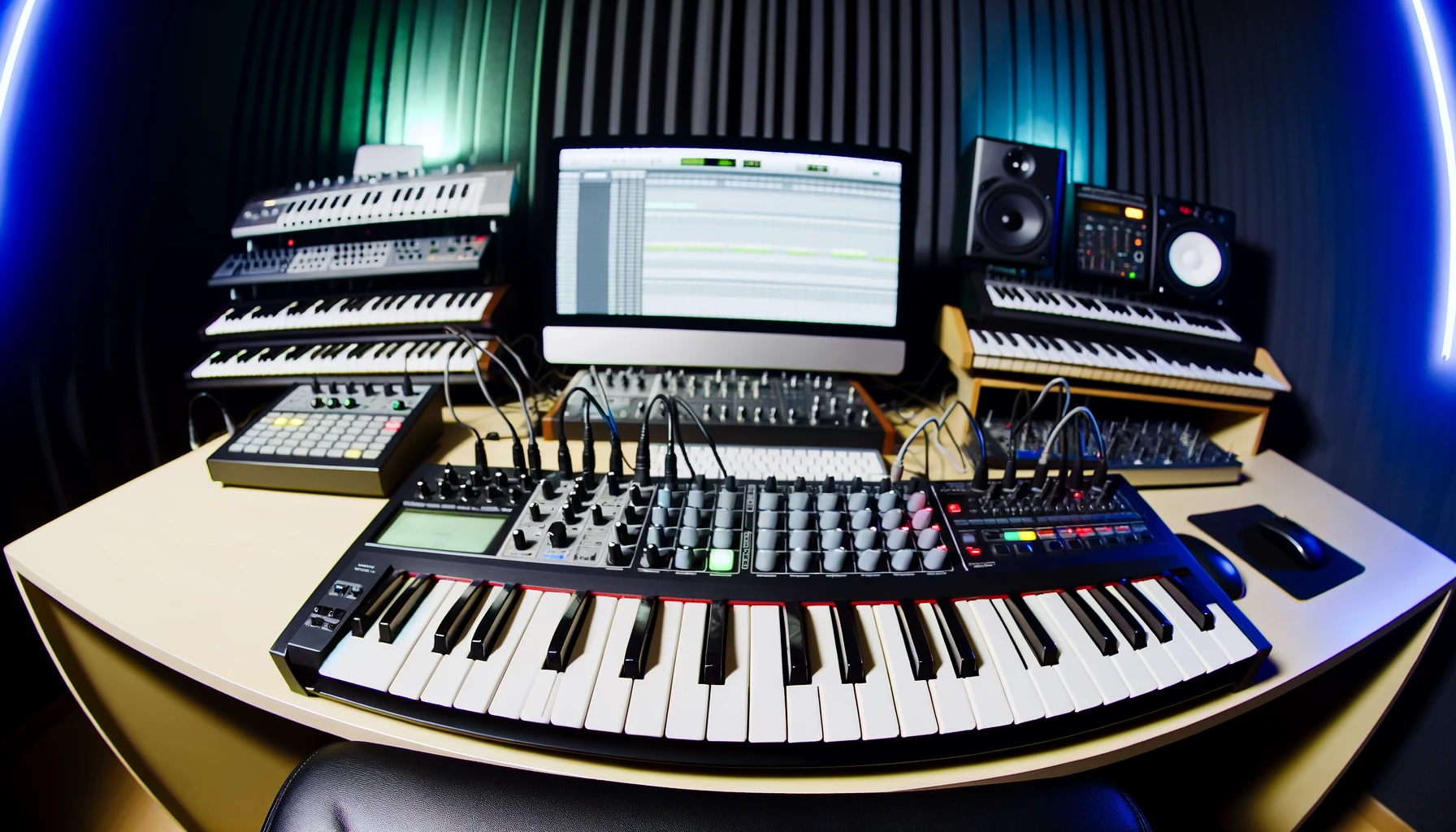Do your MIDI keyboards collect dust because you don’t know how to use them to their full potential?
Learn how to unlock simultaneous control over hardware synthesizers, iOS music apps, and DAW software instruments from one central controller.
In this guide, we’ll cover the cables, ports, and channel assignments needed to command an unlimited array of devices from a single MIDI keyboard.
Let’s dive in to multi-device MIDI routing mastery.
How Does Routing MIDI to Multiple Devices Help My Music Workflow?
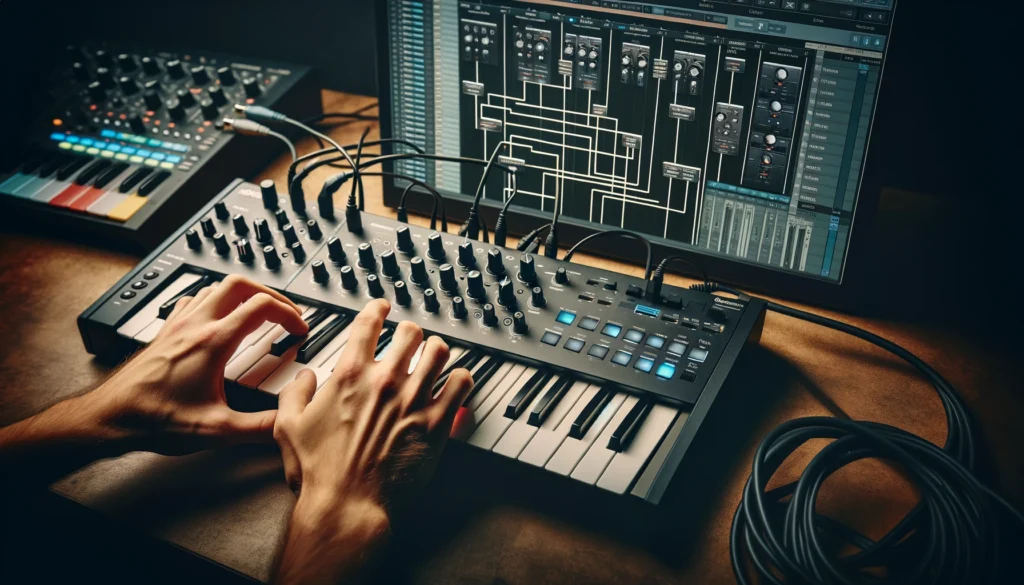
By taking time to properly connect and configure a central MIDI controller keyboard, you gain quick access to control an unlimited palette of diverse musical devices together in one unified rig.
This saves vast amounts of time switching between instruments and radically improves workflow.
For example, finger drumming on vibrant sampled percussion from an iPad through MIDI can inspire an evocative chord progression played via a stunning analog polysynth module.
Recording both together as a song idea is effortless thanks to bi-directional MIDI routing between all devices.
We’ll explore specific methods shortly, but proper MIDI implementation allows your gears’ individual strengths to combine, overcoming weaknesses in isolation.
The flexibility transforms limitations into unlimited potential when producing music
Choose a MIDI Keyboard with Multiple MIDI Outputs
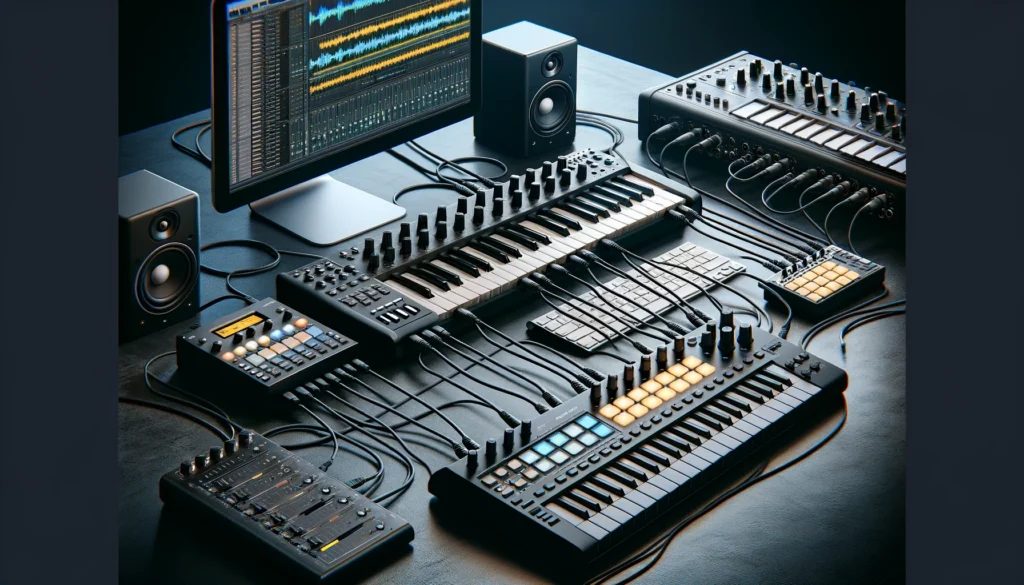
When selecting a MIDI keyboard to control multiple devices, it is important to choose one that has multiple, independent MIDI outputs.
The two main connection types to look for are standard 5-pin DIN MIDI outputs as well as USB MIDI.
Having both options will provide the flexibility to connect to everything from computers and mobile devices to vintage synthesizers and MIDI sound modules.
Most full-sized MIDI keyboards will have a set of 5-pin DIN MIDI ports consisting of MIDI Out, MIDI In, and often a MIDI Thru output.
The MIDI Out port is essential, as this will send MIDI data from the keyboard to external devices.
Some advanced keyboards have multiple MIDI Out ports (e.g.
four independent outputs) which can each connect to a different synth or sound source.
This allows all devices to receive MIDI data over a dedicated channel.
In addition to the 5-pin DIN connections, many modern MIDI keyboards also function as a USB MIDI device.
They show up as an available MIDI input and output device when connected to a computer.
The USB connection paired with multiple MIDI Outs gives the most flexibility in routing MIDI data to many destinations.
Connect the MIDI Keyboard to a Computer
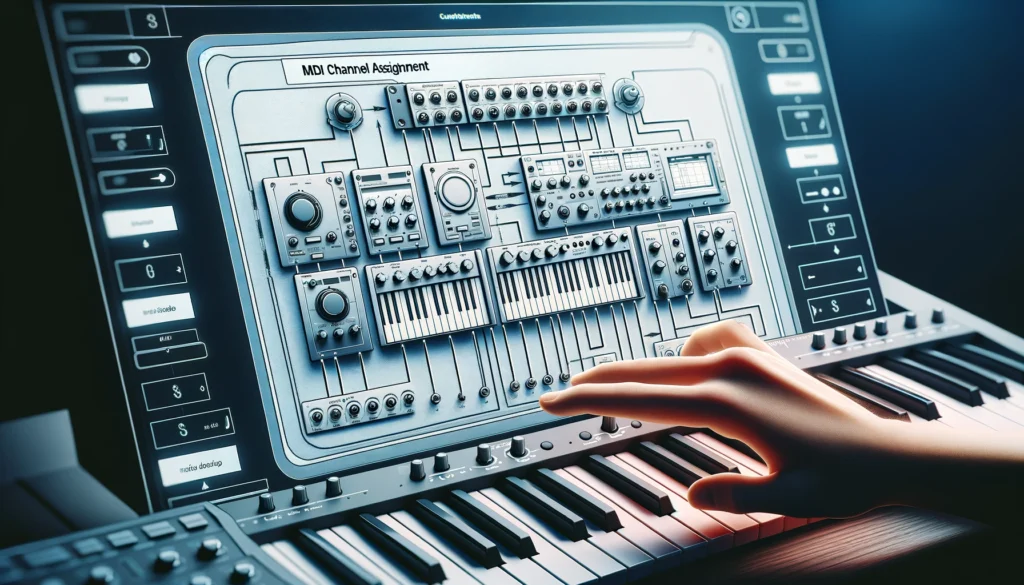
After selecting a suitable MIDI controller keyboard, one essential device to connect it to is a computer.
This allows the keyboard to interface with music production software and virtual instruments running on the computer.
The main connection method here will utilize the USB MIDI output from the keyboard into the computer.
To setup the connection, simply plug the keyboard’s USB cable into an open USB port on the computer.
Power on the keyboard and open your Digital Audio Workstation (DAW) or music program on the computer.
In the MIDI preferences, enable the keyboard as an available MIDI input device.
This will route the MIDI data from the master keyboard into the software on your computer.
From here, you can assign virtual instrument tracks within your DAW to respond to the MIDI input coming from your keyboard.
This allows you to play and record software synthesizers, samplers, drum programs, and more from the comfort of your MIDI keyboard controller.
Connect the MIDI Keyboard to External Synths/Modules
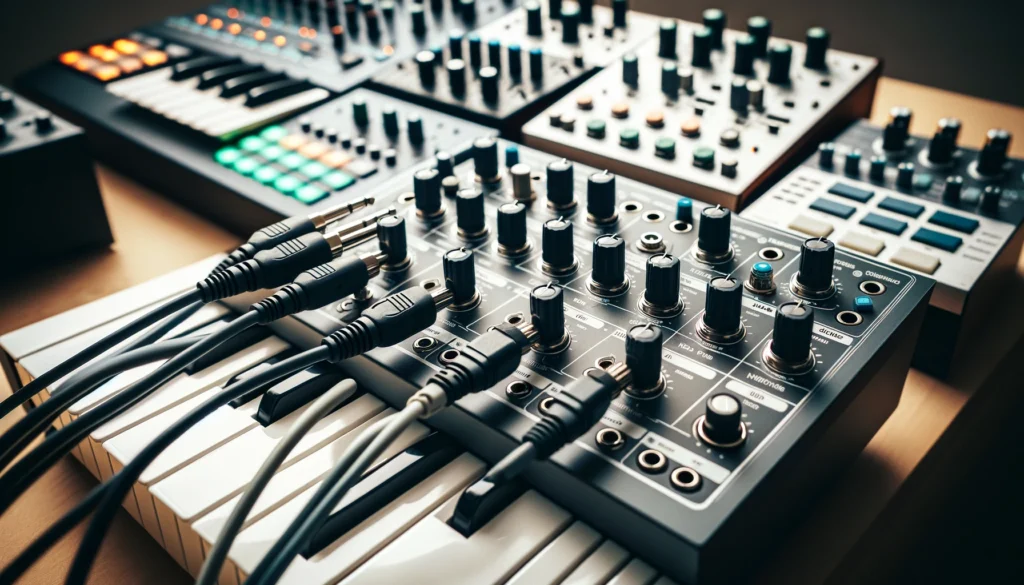
In addition to driving internal sounds in computer software, you will likely want to connect your central MIDI keyboard to external sound modules.
Examples include hardware synthesizers, drum machines, samplers, rackmount sound modules, and other MIDI compatible gear.
The easiest way to connect most external MIDI devices is via the 5-pin MIDI DIN connection ports on the back panel of your keyboard.
You simply need to run a MIDI cable from the MIDI Out port on the keyboard to the MIDI In port on the target device.
Most synths, keyboards, and sound modules will have this type of MIDI input.
To connect multiple external MIDI units, take advantage of multiple MIDI out ports if available on your controller keyboard.
Or, daisy chain devices together using MIDI Thru connections that pass unaltered MIDI signals to the next device down the line.
With the physical connections established, you then need to assign MIDI channels and configure your gear.
This allows you to control external hardware from your master keyboard.
Assign MIDI Channels
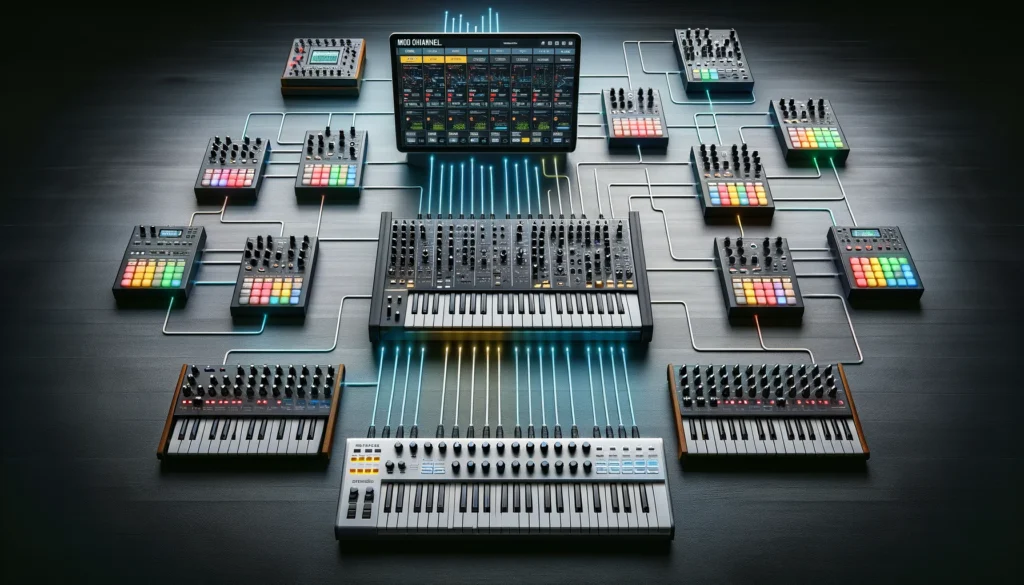
When connecting multiple synths, drum machines, and other devices to one central MIDI keyboard controller you need a way to independently play and control each one.
This is achieved by assigning them to listen and respond to activity on different MIDI channels.
Think of MIDI channels as separate lanes of MIDI data.
MIDI provides 16 available channels which you can designate — Channel 1 through Channel 16.
By default, most MIDI devices will be set to respond on Channel 1.
To avoid conflicts when connecting multiple devices, you need to assign them to alternate channels.
For example, you could set your hardware synth to receive on Channel 3.
A drum machine could then receive data over Channel 10.
Your DAW tracks with virtual instruments could listen on Channels 1 and 2.
This prevents overlapping note data.
The sending device (your MIDI keyboard) can then specify which channel to transmit on when playing any of the connected devices.
Check the manual for each of your MIDI devices for instructions on changing the receive channel.
This step is critical to be able to independently control multiple sound sources from a central MIDI keyboard or controller.
Route MIDI Data in Your DAW
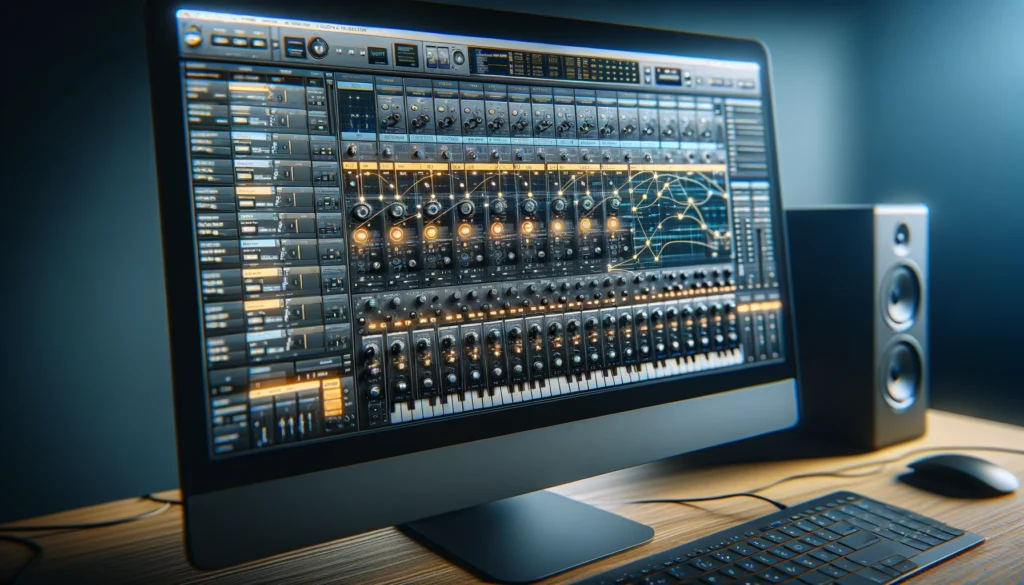
After connecting your central MIDI keyboard to external MIDI devices as well as computer software, you need to properly route the flow of MIDI data within your Digital Audio Workstation’s MIDI environment.
This allows the keyboard to drive both internal and external instruments as needed.
Most DAWs provide flexible options for handling MIDI data flows.
In addition to physical MIDI ports, they utilize virtual MIDI ports to route data between tracks and plugins within the software itself.
You’ll want to verify your master keyboard is enabled as a MIDI input device in your DAW’s preferences.
This initial step allows the DAW to receive the MIDI notes, controllers, program changes and other events generated from the keyboard.
From there, you can create MIDI tracks paired up with software synthesizers, samplers, or external MIDI outputs.
Configure each track’s input to monitor the master keyboard MIDI data stream.
Then in the track outputs, assign tracks with virtual instruments to feed audio to a mixer channel.
For tracks targeting external MIDI devices, enable the proper available MIDI output.
This MIDI routing, when combined with proper MIDI channel assignments, gives you precise control over what devices and sounds are played by the master keyboard at any given time.
The flexibility does take some up front configuration but allows seamless control of hybrid rigs blending hardware and software instruments.
Set Up Program and Bank Changes
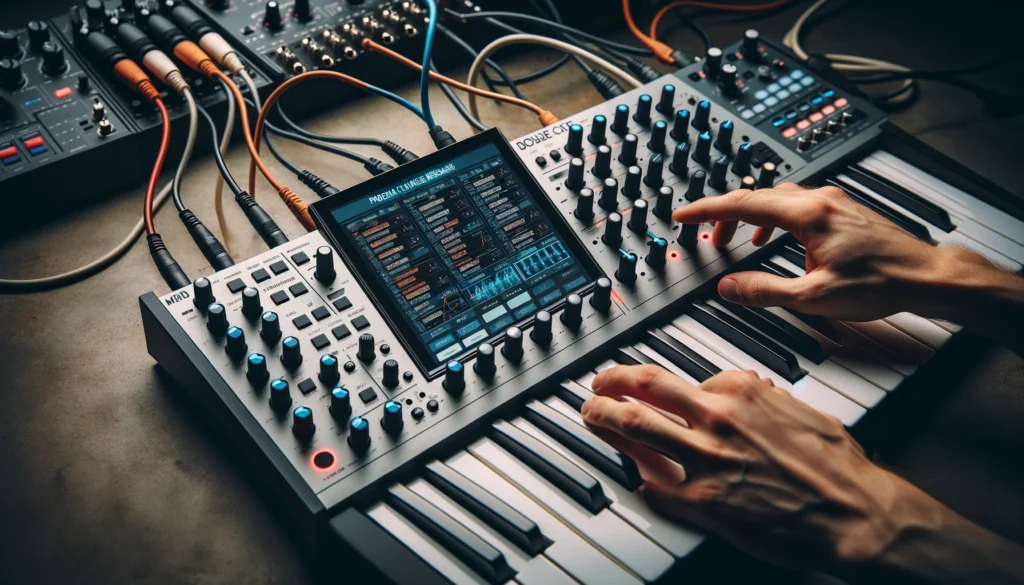
Most synth patches, presets, drum kits, and sampler multisamples are organized by program change messages.
MIDI program change commands allow you to remotely switch between the stored patches and presets within hardware and software sound devices.
Taking advantage of program change messages from a master MIDI keyboard opens up quick access to a wider palette of available sounds.
Similarly, MIDI bank select messages allow access to additional patches clustered in groups of 128.
Bank changes are like turning the page in a sound module to reveal more stored preset sounds.
Combine program change and bank select messages to unlock the full preset library available to your various MIDI devices.
To properly configure program and bank access, you first need to know the organization of your target device.
Check the synth or sound module’s manual to understand the layout.
For example, Bank 2, Program 45 might correlate to a specific bass sound.
From your master MIDI keyboard, you then need to verify it can send program change and bank select commands via MIDI.
Many keyboards have buttons or LCD menus dedicated to choosing program/bank presets.
Alternatively, you configure your DAW to insert and transmit program change data to connected devices.
Once set up, you can remotely change patches for quick access to more sounds during a performance or studio session.
Configure MIDI Thru
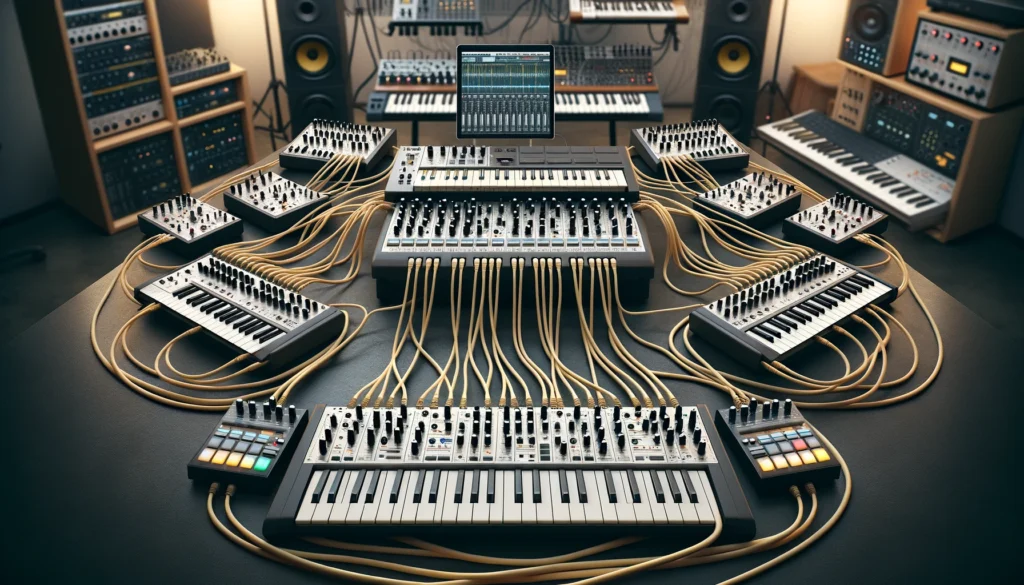
One final technique for connecting multiple MIDI devices to a central controller keyboard is by utilizing MIDI Thru connections.
A MIDI Thru port simply passes along an exact copy of the incoming MIDI signal from the keyboard onwards to another device without modifying the data.
This allows you to daisy chain multiple devices so they each echo the commands from the MIDI keyboard.
However, this does require that each chained synth, sound module, or other device listens on a different MIDI channel.
Otherwise, they will all respond in unison to the same note and controller data.
By assigning unique MIDI channels plus configuring MIDI Thru, you can centrally drive up to 16 devices from one MIDI output.
The biggest advantage of MIDI Thru is reducing the number of physical ports needed on your MIDI interface and cables running around.
For studios with lots of MIDI hardware, connecting instruments via Thru allows a clean, efficient cabling setup with all data originating from the master MIDI keyboard.
Just be aware that the Thru port passes all data along – so remove devices not needed for a given session to avoid unintended sounds.
When configured properly, MIDI Thru adds flexibility alongside the other methods outlined above for total control over a multi-device MIDI rig from one central keyboard.
Conclusion
Controlling multiple musical devices with one central MIDI keyboard unlocks greater creative flexibility.
With the right controller keyboard supporting multiple MIDI connections, intelligent routing, and channel assignments, you gain command over an entire hybrid rig of hardware synths, virtual instruments, and more.
While it requires some initial configuration, the ability to drive an array of sound sources from a single master keyboard saves time and fuels productivity whenever inspiration strikes.
